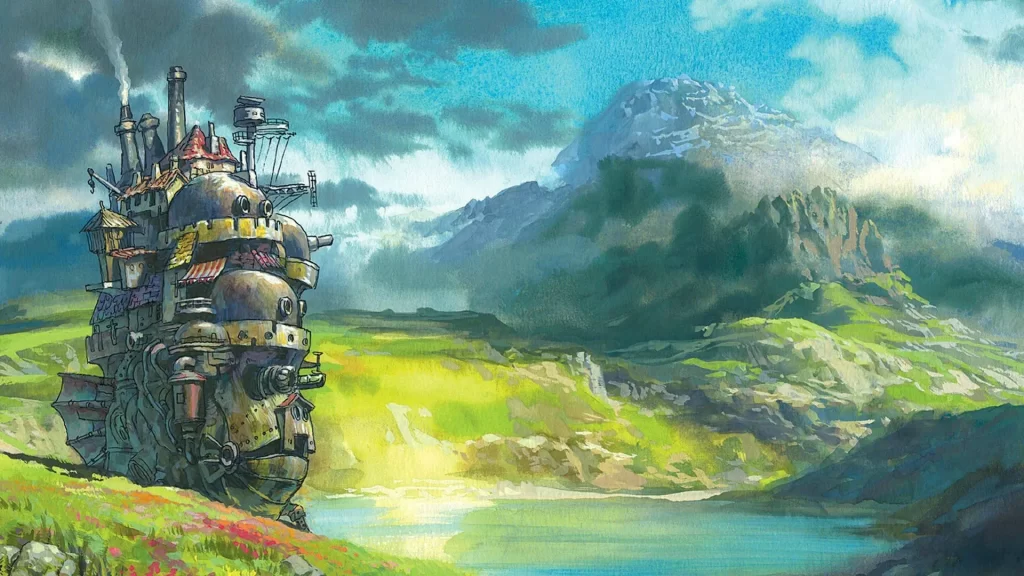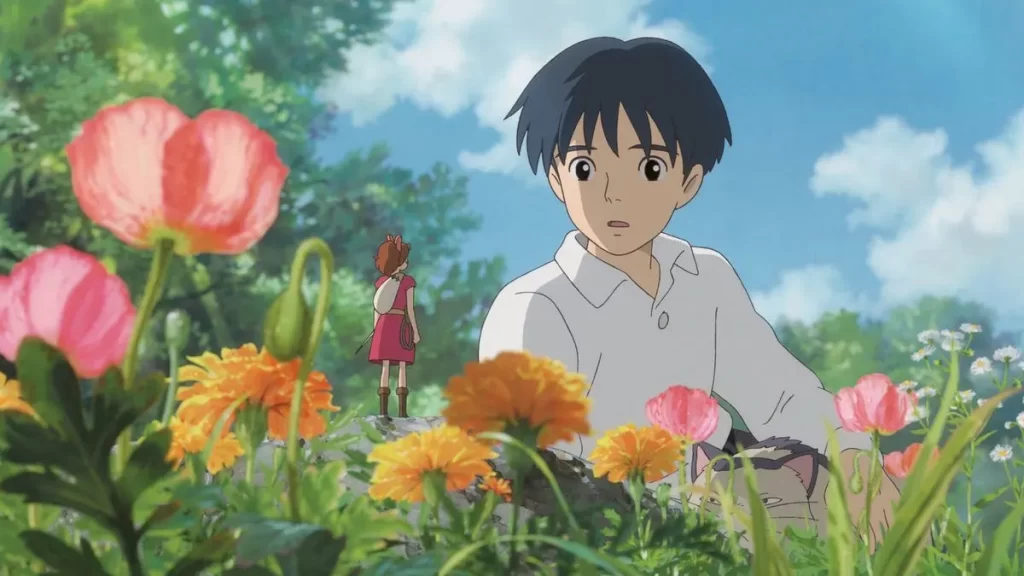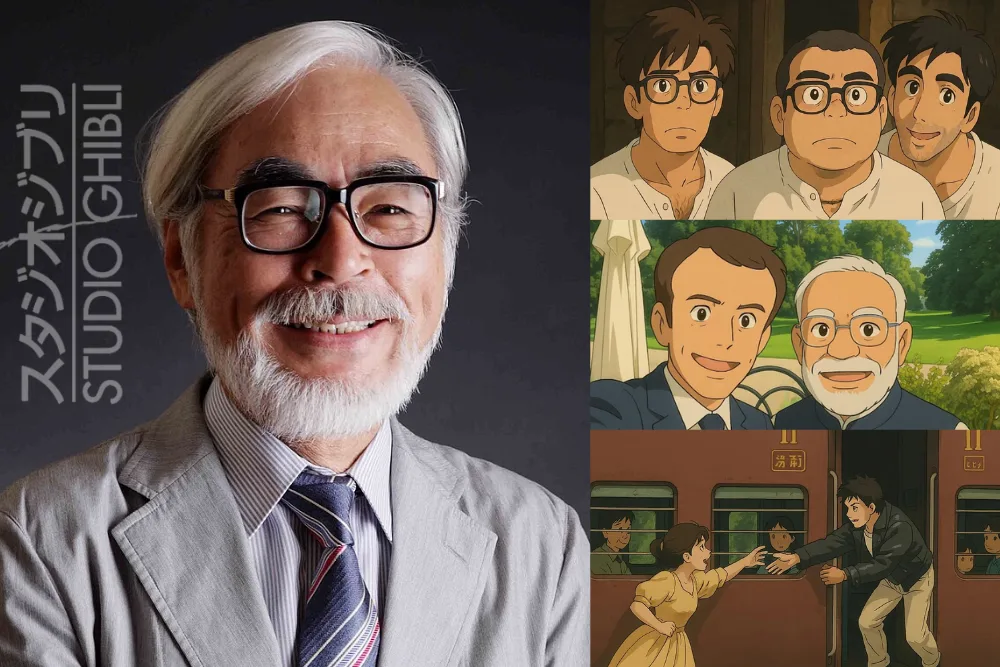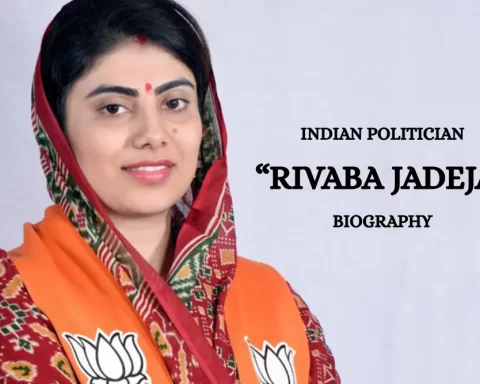Studio Ghibli has a magical way of captivating audiences worldwide with its breathtaking artistry, unforgettable characters, and emotional depth. This iconic Japanese animation studio has created masterpieces that have touched hearts across generations. In this blog, we’ll take a journey through the world of Studio Ghibli, understanding the Ghibli studio artists, Hayao Miyazaki’s artistic vision, the stunning studio ghibli art style, and more. We’ll look deep into the traditional animation techniques that make Ghibli films so unique, explore the studio’s artistic philosophy, and look at how all these elements come together to create timeless stories.
The Ghibli Studio Artist: Masters Behind the Magic
Studio Ghibli would not be the beloved name it is today without the creative minds behind it. The Ghibli studio artist is a key figure in the studio’s success. These talented individuals pour their souls into every scene, drawing inspiration from traditional Japanese art, nature, and folklore.
- Meticulous Detail: Every character, background, and environment is carefully crafted. Ghibli artists use hand-drawn techniques to create realistic textures, from the soft glow of the sun to the intricate details of nature.
- Collaboration at Its Best: Ghibli artists work closely together, sharing ideas, sketches, and concepts to bring their collective vision to life.
- Blending Tradition and Innovation: While rooted in traditional Japanese animation, Ghibli studio artists aren’t afraid to push boundaries, incorporating modern techniques and cutting-edge technology.
- Inspiration from Nature: Much of Ghibli’s art reflects a deep love for nature. The artists capture the beauty of forests, rivers, and skies in ways that feel incredibly lifelike.
- Cultural Storytelling: The art of Ghibli is deeply influenced by Japan’s cultural heritage, with many films drawing on local folklore, history, and traditions.
Also Read: Meta AI Now on WhatsApp, Instagram, and Facebook in India: Easy Setup and How It Works
The Iconic Hayao Miyazaki Art and Vision
 No discussion of Studio Ghibli is complete without mentioning Hayao Miyazaki. As one of the most influential animators in history, his art has defined not only Ghibli but Japanese animation as a whole. His artistic philosophy is woven into every frame of his films, creating visual storytelling that’s both beautiful and deeply meaningful.
No discussion of Studio Ghibli is complete without mentioning Hayao Miyazaki. As one of the most influential animators in history, his art has defined not only Ghibli but Japanese animation as a whole. His artistic philosophy is woven into every frame of his films, creating visual storytelling that’s both beautiful and deeply meaningful.
- Hand-Drawn Magic: Hayao Miyazaki insists on hand-drawn animation to keep his films grounded in tradition and personal touch.
- Imagination Beyond Boundaries: Miyazaki’s world is one where anything is possible – from flying castles to mystical creatures, his art is a gateway to an imagination without limits.
- Deep Environmental Themes: Many of his films, like Princess Mononoke and My Neighbor Totoro, showcase his passion for nature and environmental preservation.
- Complex Characters: His characters are multifaceted, with strengths and flaws, giving them depth that viewers can easily relate to.
- Emotion in Every Frame: Miyazaki’s films aren’t just about what’s happening on screen but about evoking an emotional response through every piece of art.
Also Read: ChatGPT-4o: Can Advanced AI Help Us Be Safer Online?
Studio Ghibli Art Book: A Glimpse Behind the Scenes
A Studio Ghibli art book is more than just a collection of images. It’s a window into the heart of the studio. These books showcase rare concept art, character designs, storyboards, and insights into the creative process behind some of the greatest films ever made.
- Rare Concept Art: Fans can view early sketches that reveal how beloved characters and scenes were developed.
- Storytelling Through Art: The art books also highlight how each scene tells a story, even before the animation begins.
- Detailed Character Designs: Studio Ghibli’s attention to detail is evident in every character design. The books explore the evolution of these designs, showing the journey from concept to final film.
- Artistic Process: Each book includes interviews and behind-the-scenes stories from the artists, providing an inside look at the studio’s creative philosophy.
- Collector’s Treasure: For animation lovers, the art book is a prized possession, offering both a personal and artistic connection to the films.
The Distinctive Studio Ghibli Art Style: A World of Wonder
 Studio Ghibli’s art style is one of the most recognizable in the world. Whether it’s the lush landscapes, the soft, hand-drawn characters, or the rich, detailed backgrounds, Ghibli’s art style is magical, yet rooted in reality.
Studio Ghibli’s art style is one of the most recognizable in the world. Whether it’s the lush landscapes, the soft, hand-drawn characters, or the rich, detailed backgrounds, Ghibli’s art style is magical, yet rooted in reality.
- Soft, Rounded Shapes: Ghibli characters often feature soft, rounded shapes that make them approachable and endearing.
- Vivid, Detailed Backgrounds: The background art in Ghibli films is often as important as the characters, adding depth and a sense of immersion.
- Emotional Use of Color: Ghibli films use color in a unique way, with warm tones for comfort and cool tones for mystery or danger.
- Movement and Flow: The animation often feels fluid, with characters and objects moving in a natural, almost organic way.
- Fantastical Yet Realistic: Even in their most fantastical creations, the art maintains a sense of realism, grounding the viewer in a world that feels both dreamlike and tangible.
Also Read: Rabbit R1 vs. Humane AI Pin: Which Device Will Become the iPhone of AI?
Studio Ghibli Background Art: Bringing Magic to Life
One of the most beautiful and distinctive features of Ghibli films is the background art. These lush, meticulously detailed backgrounds are a key part of the world-building in each film. They provide context and atmosphere, adding to the richness of the story.
- Rich Textures: Ghibli background artists use various techniques to give texture to their environments, from the softness of a grassy meadow to the roughness of a stormy sea.
- Nature as Inspiration: The studio draws heavy inspiration from natural landscapes, and it shows in the detail and beauty of their backgrounds.
- Attention to Scale: The backgrounds are designed in a way that gives a sense of scale, from towering castles to tiny houses, making the world feel vast and immersive.
- Using Light and Shadow: Ghibli backgrounds make expert use of light and shadow, creating a sense of time and mood that aligns with the story.
- Creating a Mood: The background art often sets the tone of the film, whether it’s the calm serenity of My Neighbor Totoro or the intense drama of Spirited Away.
Studio Ghibli’s Artistic Philosophy: A Deep Connection to Tradition
Studio Ghibli’s artistic philosophy goes beyond just drawing beautiful pictures. It’s about creating stories that resonate deeply with audiences, grounded in tradition but not afraid to innovate.
- Traditional Animation: Studio Ghibli continues to embrace traditional animation techniques, ensuring each frame feels hand-crafted and personal.
- Cultural Reflection: Ghibli films reflect the culture, history, and values of Japan, allowing audiences worldwide to connect with the stories on a deeper level.
- Moral Lessons Through Art: The films often incorporate important lessons about kindness, bravery, and the environment, making the art a medium for life lessons.
- Timeless Quality: Ghibli’s art is not just about making a pretty picture; it’s about creating something that will stand the test of time, both in artistry and in themes.
- Collaborative Spirit: The studio encourages artists to bring their unique ideas and styles to the table, creating a diverse but unified artistic vision.
Traditional Animation and the Ghibli Legacy
 Traditional animation is at the heart of Studio Ghibli. Unlike the CGI-heavy animation of today, Ghibli’s focus remains on hand-drawn animation, which brings a unique charm to each frame.
Traditional animation is at the heart of Studio Ghibli. Unlike the CGI-heavy animation of today, Ghibli’s focus remains on hand-drawn animation, which brings a unique charm to each frame.
- Labor-Intensive Process: Creating each frame by hand gives the animation a warmth and soul that’s hard to replicate with computers.
- Fluid Movement: The fluidity of traditional animation, especially in the hands of skilled artists, allows characters to feel more natural.
- Personal Touch: Every character and scene has a personal touch, as it’s been crafted by the hands of skilled animators who pour their heart into their work.
- No Rush: Unlike modern animation, which often operates on tight deadlines, Ghibli gives its artists time to perfect each detail.
- A Dying Art Form: As the world shifts toward digital animation, Ghibli remains one of the few studios that still champions traditional animation.
Conclusion: The Timeless Power of Ghibli Art and Storytelling
Studio Ghibli’s magic is found not only in its unforgettable characters and plots but also in the artistry that brings those stories to life. From the talented Ghibli studio artists to the intricate background art, every frame is a testament to the studio’s commitment to quality. Hayao Miyazaki’s artistic vision and the studio’s philosophy of traditional animation have created a legacy that will endure for generations to come.
FAQs About Studio Ghibli
Studio Ghibli is famous for its beautifully animated films, rich storytelling, and unique art style, including classics like Spirited Away and My Neighbor Totoro.
Studio Ghibli was founded by Hayao Miyazaki and Isao Takahata in 1985, with producer Toshio Suzuki playing a key role in its growth.
Yes, Studio Ghibli is still active. Their latest film, How Do You Live?, directed by Hayao Miyazaki, is in production as of 2023.
Ghibli films are available on streaming platforms like HBO Max (in the US) and Netflix (in some countries), as well as on Blu-ray and DVD.
Miyazaki has often mentioned Nausicaä of the Valley of the Wind as one of his favorite works, as it reflects his deep environmental concerns.
No, Studio Ghibli primarily focuses on films. However, they’ve created a few short films and special projects, including Ghibli Park in Japan.








